Ask Ethan # 72: The Story of the Universe
We declare an accurate picture of the history of the universe. But how much is this true?
The only reason for the existence of time is that everything does not happen at the same time.
- Albert Einstein
And so we survived until the end of the week, which means it’s time to choose another question. Every week you send your questions and suggestions, and I choose the best one to tell you about the Universe. Today’s comprehensive question came from Scott Robbins, who wants to know:
I am confused in the history of the Big Bang. When scientists talk about the beginning of the universe, the formation of elements and the creation of galaxies, they indicate the exact time intervals. But where do they get these numbers? It is hardly possible to empirically confirm them, but still they are indicated very accurately (and confidently). How can scientists be so sure of this data, and where do they come from?
')
And he even gave a link to the illustration of the question.
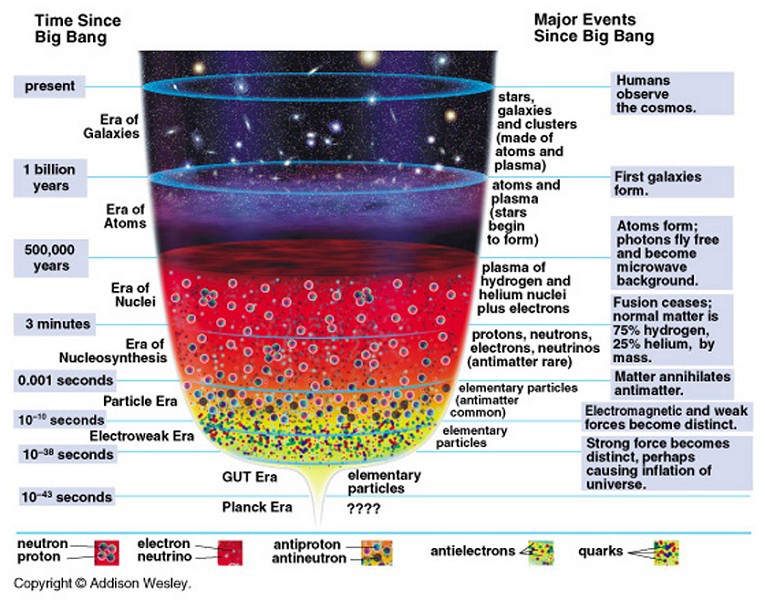
The image is almost correct, but it does not indicate something important, from my point of view: errors. There are inaccuracies in all figures, but in general everything is, and these errors are relatively small.
How do we know this? Due to three factors:
- We understand how the universe expanded, and, therefore, how its size and scale change over time.
- We understand how the temperature (and energy) of particles in the Universe depends on the history of expansion.
- We understand, more or less, the physical processes that determine these steps and their evolution.
Let's look at each of the factors separately, and then put them together.
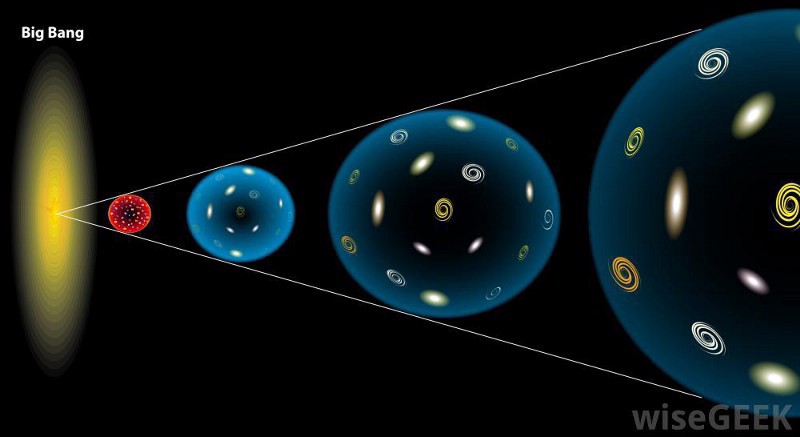
How does the universe expand? This is the simplest of questions, and the physics of this process was already known in 1920–1930, when it was independently described by Alexander Friedman, George Lemaitre, Howard Robertson and Arthur Walker. According to GR, if all regions of the Universe on a large scale are filled with approximately the same amount of matter and energy, then only two things determine its evolution: the initial rate of expansion and the properties of what fills it.
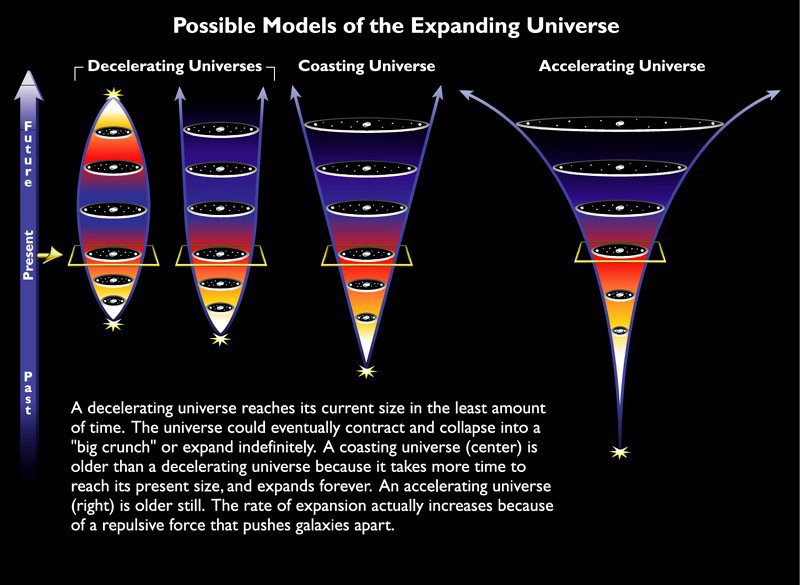
And fill it with such things as:
- ordinary matter (protons, neutrons, electrons),
- dark matter,
- photons
- neutrino,
- the energy inherent in the space itself (dark energy / cosmological constant),
- a whole car of things that are possible, but not yet observed by us: cosmic strings, magnetic monopoles, domain boundaries, cosmic textures and curvature of space.
We measured not only the current content of our Universe, but also what mixture of the above filled it at any moment of the past.
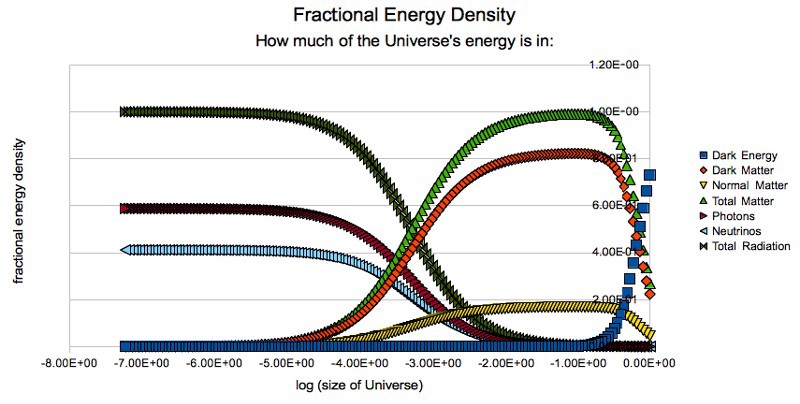
This is the first part: how the universe expanded over time. But the second part is no less important.
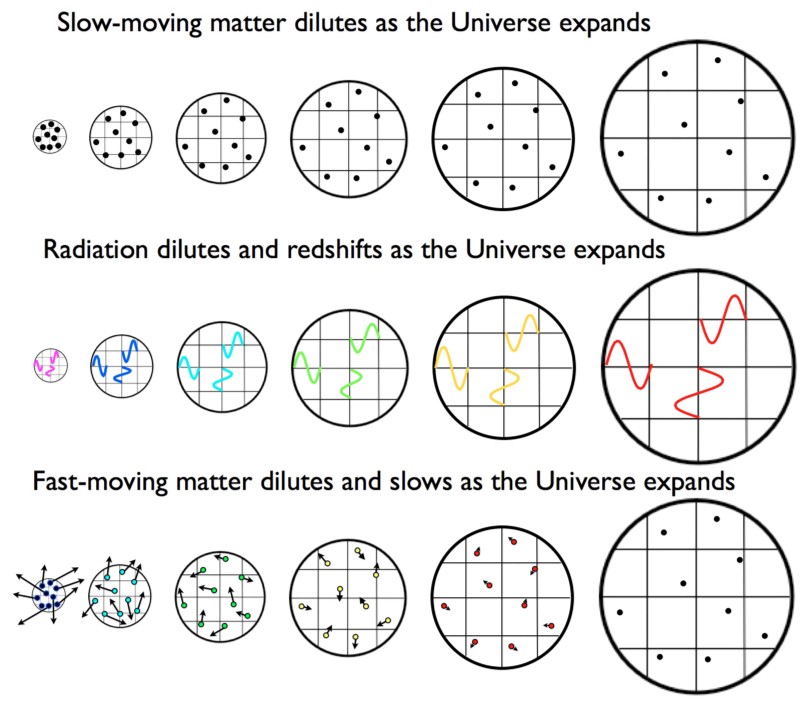
How did the particle temperature / energy behave in the distant past? When you imagine the expansion or contraction of the Universe, you are more likely to imagine a limited amount of matter inside a changing volume. With increasing volume, the density decreases, and with decreasing - increases.
But this system is also affected by radiation: the photon wavelength also increases (with expansion) and decreases (with compression) in accordance with changes in the Universe. Since the wavelength determines the energy of a photon, photons will be more energetic in a compressing Universe, and their energy will decrease in an expanding one. Consequently, when the universe was smaller in the past, its temperature was hotter. In the case of particles, their kinetic energy behaves in the same way as the temperature of photons.
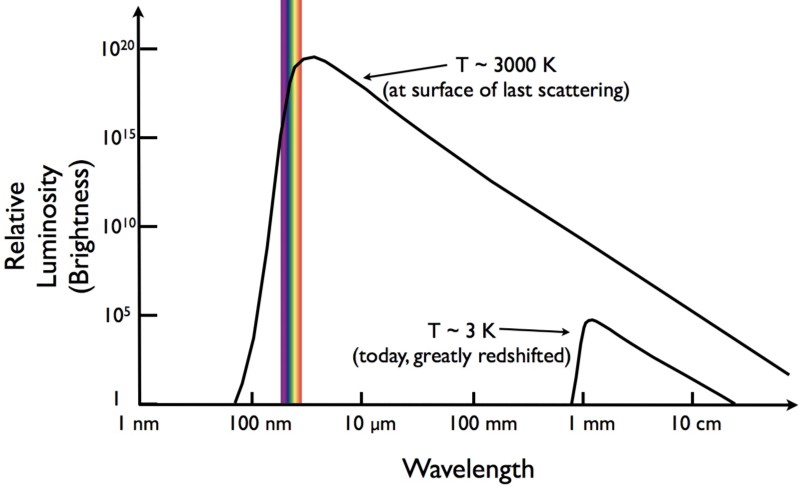
And it is directly related to the scale of the Universe: at any time when the Universe was several times smaller, the energy and temperature of the photons were as many times as large. In the universe of half the size of their temperature was twice as high. In the universe ten times less than their temperature was ten times higher. In the universe, a million times less their temperature was a million times higher.
So, at any moment of the past of the Universe, we know the temperature and energy, as long as we know the filling of the Universe and the scheme of its expansion.
And finally ...
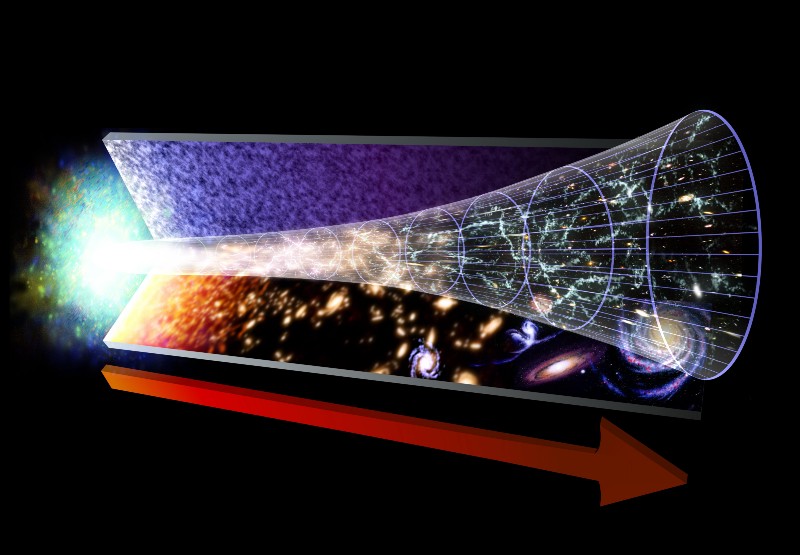
What were the physical processes that determine each of these steps? Errors appear at this step, but they are still quite small.
The points:
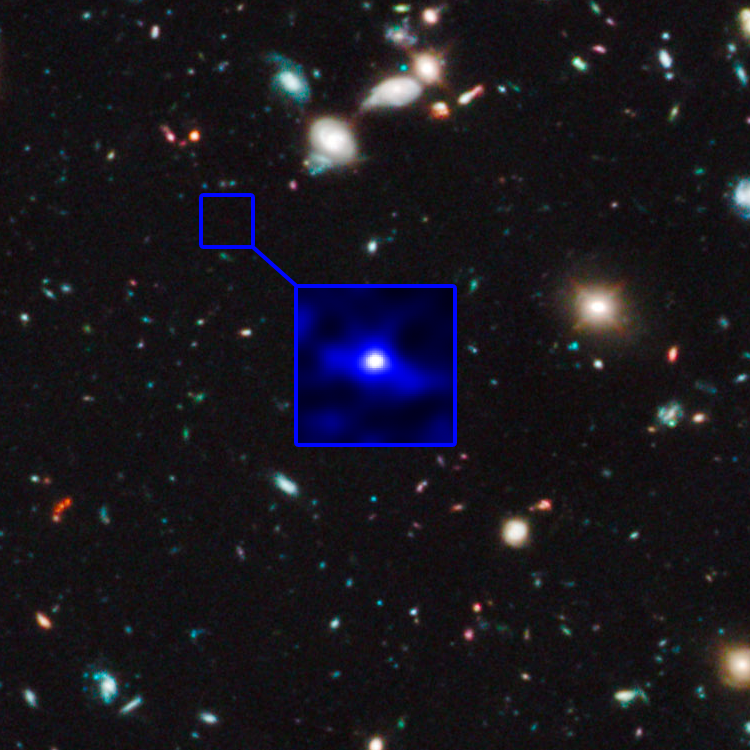
Galaxies begin to form, judging by our observations, no later than 380 million years after the beginning of the Universe, since it is this age that the galaxy is the most distant from us (see above). Simulations and calculations of the formation of large structures, together with an understanding of the nature of the original fluctuations of the Universe, lead to estimates that the first proto-galaxies were formed when the Universe was from 130 to 210 million years old. Of course, these processes continue after.
The first stars were formed even earlier, and we hope that the telescope of James Webb will be able to find some of the earliest and brightest stars! According to the simulations, we expect that the first stars appeared when the Universe was from 40 to 100 million years old, and since then their formation has accelerated sharply.
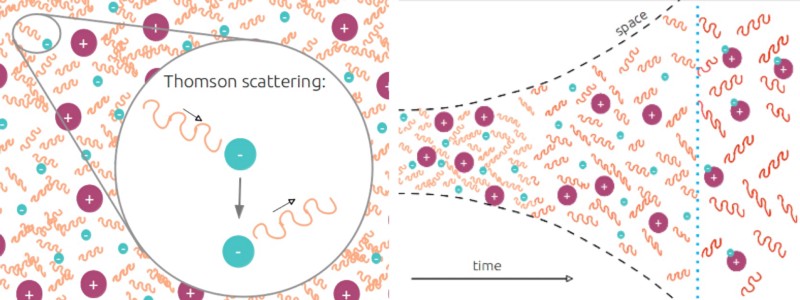
Prior to this, the formation of neutral atoms occurred, which is quite simple to calculate, based on the known proportion of photons / protons / neutrons / electrons in the Universe and the physical principles of the formation of atoms. This happened when the universe was 380,000 years old, but it happened gradually over 117,000 years; 380 000 - the average age of the universe, when it became neutral.
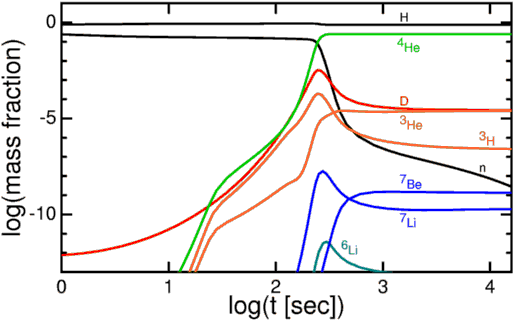
Before that, the lightest atomic nuclei appeared: the Big Bang nucleosynthesis. It also took some time, but the most "important" happened when the universe was 3 to 4 minutes. The best estimate I can give the time to complete nucleosynthesis is three minutes 45 seconds.
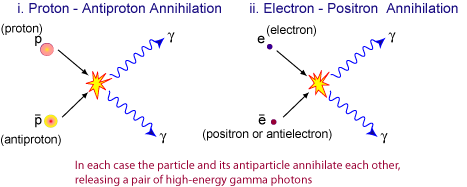
The annihilation of matter and antimatter proceeded gradually; the annihilation of electrons and positrons was going on when the Universe was from 1 to 3 seconds, but these particles were the lightest. Heavier ones annihilated earlier, therefore, the particles that stopped interacting with another Universe at the early stages of its development (such as neutrinos) have a lower temperature than photons.

Electroweak symmetry breaking occurs on scales comparable to the masses of heavy bosons that serve as a link in weak interactions. We only need to determine at what temperature this occurs, and we will be able to find out the age of the Universe at that time: about 0.1 nanoseconds.
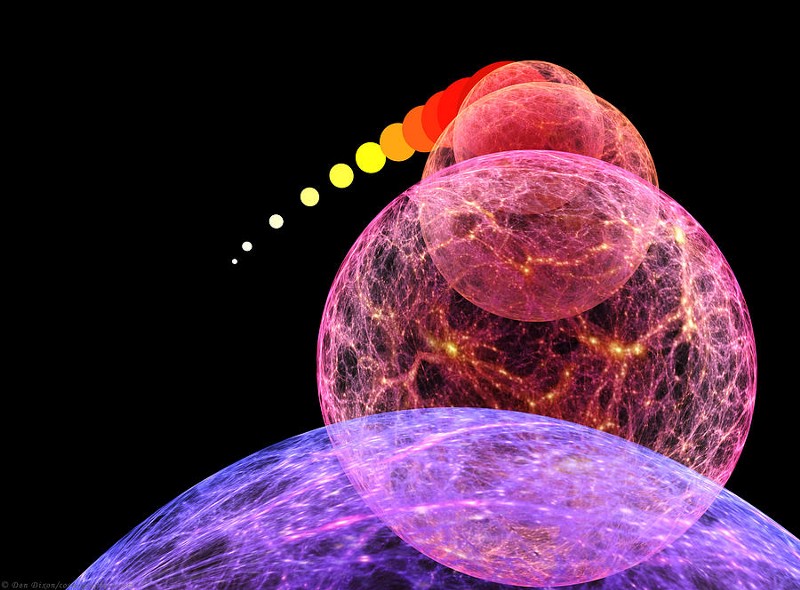
Before that, we determined the intervals and limitations of such processes as baryogenesis (creating the asymmetry of matter and antimatter), a great union (which may have occurred, and perhaps not), and inflation. We know that inflation has ended (and the Big Bang began) somewhere between 10 -35 and 10 -20 seconds, if we count from t = 0 (naive extrapolation of the Big Bang to a point with infinite density and temperature). As you can see, these figures have a rather large error.
Putting it all together - lowering the errors and determining the average, most probable values - we get the history of the life of the Universe. Personally, I like to display it on the scale of one year to show perspective.

This is how we know, with such precision, the history of the Universe! Thank you for the wonderful question, and I hope that the explanation has been made clear for you and for the rest. Send me your questions and suggestions for the following articles.
Source: https://habr.com/ru/post/372487/
All Articles